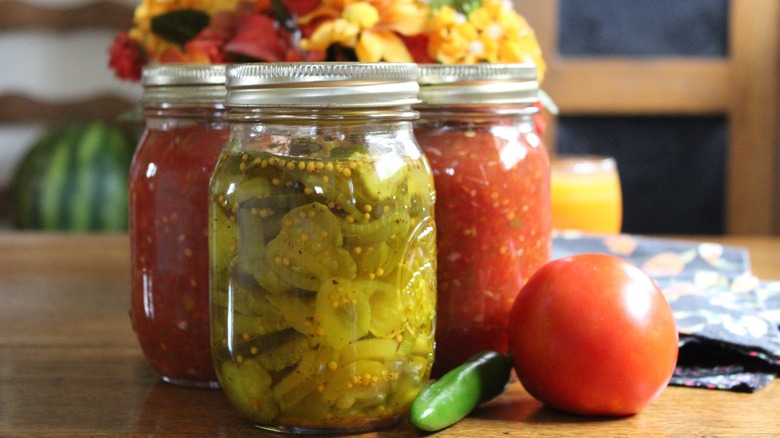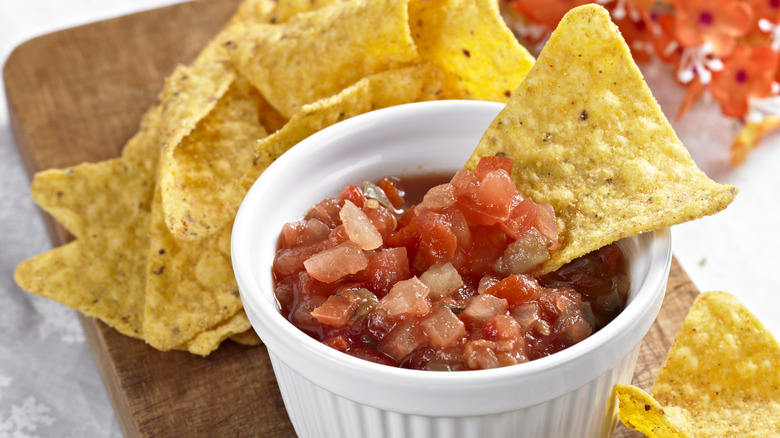How Long Does Home-Canned Salsa Really Last?
Home-canned salsa allows you to capture the peak flavors of your tomatoes, spicy peppers, onions, herbs, and spices in a jar that lives on well after summer has passed. Not to mention, your personal blend tastes better than store-bought because you can create the exact spice profile you prefer. Whether you use it as a dip for tortilla chips, as a condiment to top your tacos, or as a secret ingredient in your tomato soup, home-canned salsa gives you plenty of ways to incorporate it into your weekly meals. However, if you can your salsa and find a jar from last summer, you might wonder if it is still good to eat. The answer depends on a few factors.
According to the USDA, food canned at home will generally keep its quality for at least a year. Of course, there are a lot of caveats that range from the canning method you use to how you store it to the integrity of the seal. The food agency notes that if you store canned food in a warm place it could lose some of its quality, while storing it in a damp environment can cause the metal lids to lose their integrity, causing spoilage, but a year is the demarcation for quality, not necessarily safety.
It's recipe dependent
Dr. Elizabeth Andress is a food scientist who was the project director and one of the founders of the National Center for Home Food Preservation (NCFFP). Per Healthy Canning, Andress stated, "We do say we recommend using within a year for best quality; that also is not intended to indicate you should throw anything out that is over a year old. It says, use within a year for best quality. Beyond that, just like with commercially canned foods, you might start to see some quality deterioration."
When it comes to salsa specifically, the NCFFP explains that because salsas are an acidified food with ingredients that include mixtures of acid and low-acid the recipe matters. It can influence everything from how you prep to whether you use a pressure canner or the boiling water canner technique. So if you are home-canning a charred tomato salsa, a creamy salsa verde, or a pineapple salsa, you should check out NCFFP's salsa recipe guidelines to determine which method is appropriate for your recipe.

